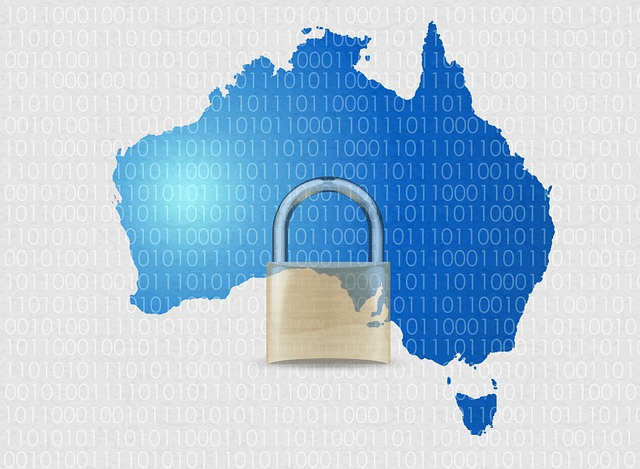
As the digital world rapidly evolves, implementing robust cybersecurity measures has become paramount, especially for businesses and everyday Australians. In an era where cyberthreats are ever-present and continuously evolving, safeguarding sensitive data is a top priority.
Australia, with its thriving economy and advanced technological infrastructure, has become a prime target for cybercriminals seeking to exploit vulnerabilities for financial gain or a host of other reasons. No one is immune to cyberattacks, spanning from large corporations to individuals.
It has become clear that a dynamic approach is needed to address the cybersecurity risks that plague Australia. It will take a combination of cyber awareness, leveraging cutting-edge technologies, and implementing best practices from every individual and organization working together.

Australia’s Evolving Security Posture
Australia has seen an increase in cyber threats over the past few years, as well as the sophistication of cyberattacks. The Australian Signals Directorate (ASD)‘s department for cybersecurity and the Australian Cyber Security Centre (ACSC) saw an 8 percent increase in cybercrime from fiscal year 2021-22 to 2022-23, and over 90% of those attacks involved ransomware.
Learn more: The Australian Signals Directorate: An Overview
The Cyberattack on Optus: A Wake-Up Call
High-profile incidents such as the 2022 cyberattack on Optus, one of Australia’s largest telecommunications companies, have underscored the grave implications of data breaches. The Optus breach, which exposed the personal information of millions of Australians, sent shockwaves through the nation prompting urgent calls for enhanced security measures and stricter regulations.
The nation is working to implement a comprehensive national cybersecurity strategy to safeguard systems and data across governments, businesses, and critical infrastructure sectors like telecommunications, energy, banking, and more. This involves increasing cyber capabilities, information sharing, risk management, and policies to raise cyber resilience holistically.
While Australia has strong cyber offensive capabilities, there is an emphasis now on strengthening defensive measures as well. This includes boosting funding for awareness training, monitoring for threats 24/7, deploying protective technology on networks, and facilitating coordinated incident response plans. Partnerships between government and industry are a major component.
Roadblocks to Cyber Security

Cybersecurity has become a critical concern for organizations and governments around the world, and despite efforts to bolster cybersecurity measures, Australia continues to face significant roadblocks.
Skills Shortage
One of the most pressing issues in Australia’s cybersecurity landscape is the shortage of skilled professionals. The demand for cyber security experts and capable personnel significantly exceeds the supply, making it challenging for organizations to find and retain talent. This shortage not only hinders their ability to effectively secure their systems but also leaves them vulnerable.
Legacy Systems and Infrastructure
Many Australian organizations, particularly in the public sector, rely on aging and outdated systems. These systems were not designed with modern cybersecurity threats in mind, making them susceptible to vulnerabilities and difficult to secure. Unfortunately, upgrading or replacing these systems can be costly and many underestimate the importance of securing their systems, further complicating the cybersecurity challenges.
Regulatory and Compliance Complexities
Australia has a patchwork of regulations and compliance requirements related to cybersecurity, spanning various industries and sectors.
Navigating these can be challenging for organizations, particularly smaller ones with limited resources. Ensuring compliance while maintaining robust cybersecurity measures can be a daunting task.
Lack of Cybersecurity Awareness and Culture
It is difficult to care about an issue that isn’t on your radar. Even today, with more and more services offered online, cybersecurity is neglected.
This underscores the importance of educational outreach and knowledge-sharing programs to enhance cyber awareness across society.
Threat Landscape Evolution
The cyberthreat landscape is constantly evolving, with new and sophisticated attack vectors emerging regularly. Keeping up with these threats and implementing effective countermeasures can be a significant challenge, especially for organizations with limited resources and expertise.
Addressing these roadblocks requires effort from government, industry, and educational institutions. Initiatives such as investing in cybersecurity education and training, fostering public-private partnerships, and streamlining regulations can help Australia overcome these challenges and strengthen its cybersecurity posture.
The Financial Toll of Scams

Scams have taken a devastating financial toll on Australians, according to the alarming figures revealed in the Targeting Scams report. Staggering losses exceeding $200 million were inflicted by scammers in 2023 alone.
Investment Scams
Investment scams emerged as the most devastating category, even with a significant decrease in losses compared to the prior year. These accounted for over $290 million in losses. Romance scams and false billing scams followed behind, stripping victims of $34.3 million and $28 million respectively.
Phone Scams

Text messages were the most prevalent mode of contact used by scammers to lure their victims with a 37.3% increase from 2022. However, it was scam phone calls that inflicted the highest reported losses, emphasizing the cunning and manipulative tactics at play.
Alarmingly, social media scams also emerged as a major source of financial detriment, ranking as the second-highest reported loss category.
Who is most vulnerable?

Certain members of the Australian community have been disproportionately targeted and affected by fraudulent schemes.
Although overall losses declined in 2023, Australians aged 65 and above witnessed no change in reported losses compared to 2022. This age group suffered the highest financial detriment, with $121 million in reported losses.
Older Australians were the sole demographic that did not experience a reduction in reported losses. A contributing factor could be that some retirees possess substantial savings and actively seek investment opportunities.
Despite decreases in reported losses for those 65 and over following scam prevention initiatives in September 2023, significant investment scam losses in February ($13.7 million) and May ($11.2 million) led to a 13.3% increase in reported investment scam losses for older Australians overall.
What’s the plan?

The Government’s Response
On July 1, 2023, the Government launched the National Anti-Scam Centre. The Anti-Scam Centre will expand on the work of the Australian Competition and Consumer Commission’s (ACCC) Scamwatch service and bring together experts from government agencies, the private sector, law enforcement, and consumer groups to make Australia a harder target for scammers.
Cyber Security Strategy
The Australian government has unveiled a comprehensive 2023-2030 Cyber Security Strategy that focuses heavily on international cooperation and information sharing. This forward-thinking initiative is designed to fortify the nation’s digital defenses and bolster its overall security posture in the face of increasingly sophisticated cyberattacks.
By encouraging collaboration between academia, industry, and government agencies, the Cyber Security Strategy seeks to nurture a thriving cybersecurity ecosystem that can stay ahead of emerging threats and develop cutting-edge defensive technologies.
Awareness

At the core of this strategy lies a multi-pronged approach that addresses the various facets of cybersecurity.
Australian citizens and businesses need the knowledge and skills to identify cyber risks and strategies of how to handle them. By investing in awareness, the Australian Government is aiming to cultivate a cyber-resilient society that is capable of thwarting attempted attacks.
Collaboration
Australia aims to strengthen its partnerships with allied nations and international organizations, facilitating the exchange of threat intelligence and best practices, ultimately enhancing global cybersecurity preparedness.
Through a combination of education, innovation, and collaboration, the nation is poised to enhance its ability to detect, respond to, and recover from cyber incidents, safeguarding its critical infrastructure, businesses, and citizens from the ever-present threat of cyber-attacks.
Safety Guidelines for Cloud Providers

As cloud computing has become more popular, the Australian government has recognized the need to establish robust guidelines and standards for cloud service providers operating within the country.
IRAP
The Australian Signals Directorate (ASD) has played a pivotal role in developing the Information Security Registered Assessors Program (IRAP). This program aims to provide a consistent and rigorous assessment of cloud services against stringent security requirements. By aligning with FISMA and FedRAMP principles, IRAP ensures that Australian cloud providers adhere to best practices for risk management, security controls, and continuous monitoring.
Need help with IRAP certification? Get in touch with a cybersecurity expert today.
NIST
The Australian government has also actively engaged with international counterparts, including the U.S. National Institute of Standards and Technology (NIST), to ensure alignment and interoperability between security standards.
By mirroring and working toward U.S. standards like FISMA and FedRAMP, Australia is positioning itself as a trusted and secure destination for cloud services.
The REDSPICE Initiative

The Australian government developed an ambitious project to significantly increase the nation’s security posture by the year 2030. This project, named REDSPICE, an acronym for Resilience – Effects – Defence – SPace – Intelligence – Cyber – Enablers, is the largest single investment in the ASD’s history and will equip ASD to ensure that Australia is best prepared meet this goal.
The Australian government will provide $9.9 billion over the course of 10 years to enable ASD to expand the range and sophistication of their intelligence, and offensive and defensive cyber capabilities.

In ASD’s 2022-2023 fiscal year, there was significant expansion, opening 3 new facilities in Brisbane, Melbourne, and Perth. ASD also:
- Conducted innovative, first-of-its-kind ‘cyber hunt’ operations on the most critical government and critical infrastructure networks.
- Onboarded over 175 new customers to the Cyber Threat Intelligence Sharing platform, improving the rapid exchange of cyber threat intelligence across government and industry.
- Deployed over 25,000 new host-based sensors to customer networks, enhancing visibility of emerging threats to Australia’s most critical systems.
- Established a secure design and architecture team to provide guidance to major government information and communications technology projects.
- Expanded ASD’s national incident response capabilities and 24/7 defense operations, including upgrades to the Australian Cyber Security Hotline (1300 CYBER 1) and ReportCyber, and a new incident response team in Melbourne.
- Improved the resilience of critical infrastructure through various initiatives aimed at increasing cybersecurity maturity across Australian industries.
Let’s talk!

Do you want to know more about Australia’s cyber security landscape? Do you want to know how you can get IRAP Certified?
We have some awesome experts who would love to chat! Call us!


